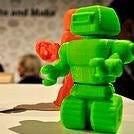A timeline of the maker community response to the pandemic
Updated on 11 October 2020
What is this?
An attempt to capture key dates and actions illustrating the maker communities’ Covid-19 relief effort
Why?
While rapid prototyping and design innovations of PPE by makers tend to grab headlines, what we hope to document is how communities crossed unexplored bridges to build new relationships and trust with neighbourhoods, businesses, health services and government bodies.
Here is the timeline (work in progress)
Some context:
The maker cultures are rooted in problem-solving, peer-to-peer and collaborative production. But the early promises of the movement rarely delivered on these ambitions, often leading to gadgetry and sometimes to gatekeeping and cliques. During this crisis while governments, manufacturers and supply chains were overwhelmed, we can’t deny that many of these communities have finally assumed their role by successfully leveraging their skills, spaces and networks.
They did the technical and production work: researched medical certifications, policies and documentations, wrote documentation, met with frontline workers and decision-makers before and during the production process. They directly and indirectly supported the production of millions of PPE.
They also did the care work: cleaned and sanitised spaces and equipment, fundraised, organised hyperlocal delivery of food and supported networks of mutual aid. This type of work is always the less apparent and should be equally celebrated.
These initiatives need capturing because we are facing many other challenges that need strong civic structures, community resilience and co-production. I am concerned that the momentum will go without us being able to pause to understand how this mobilisation happened, and more importantly how it it can be reproduced.
Capturing these actions is also useful to avoid falling into the idealisation of the movement, as we have witnessed unnecessary duplication of efforts, as well as questionable designs and safety measures.
Here are some of questions I would like us to investigate through this exercise:
How do we collect and curate the large amount of technical innovation and knowledge created and what should we do with it? What are the conditions and incentives to mobilise this community effort when we need it again? How did grassroots organisations build trust and relationships? Who is mapping these new networks? Who is in charge to maintain these new connections? What behaviours should we replicate and what barriers to engagement should we aim to remove?
This documentation exercise links to an upcoming series of online discussions on maker cultures response to Covid-19 hosted by Maker Assembly
I have separated UK and Global community actions in 2 different categories in the timeline as I aim to create a UK-specific timeline once I collect enough data.
What’s missing and how you can contribute:
The timeline is a work in progress. It is obviously an incomplete snapshot and is likely offering a very western point of view of the global relief effort. You can help correcting this by contributing your own perspective with date and links on this Google doc: https://docs.google.com/spreadsheets/d/1t7QoI8uHYY8Mf_QkuOeja6c1ONmLCvY8Z3kklaqeaMw/edit?usp=sharing
